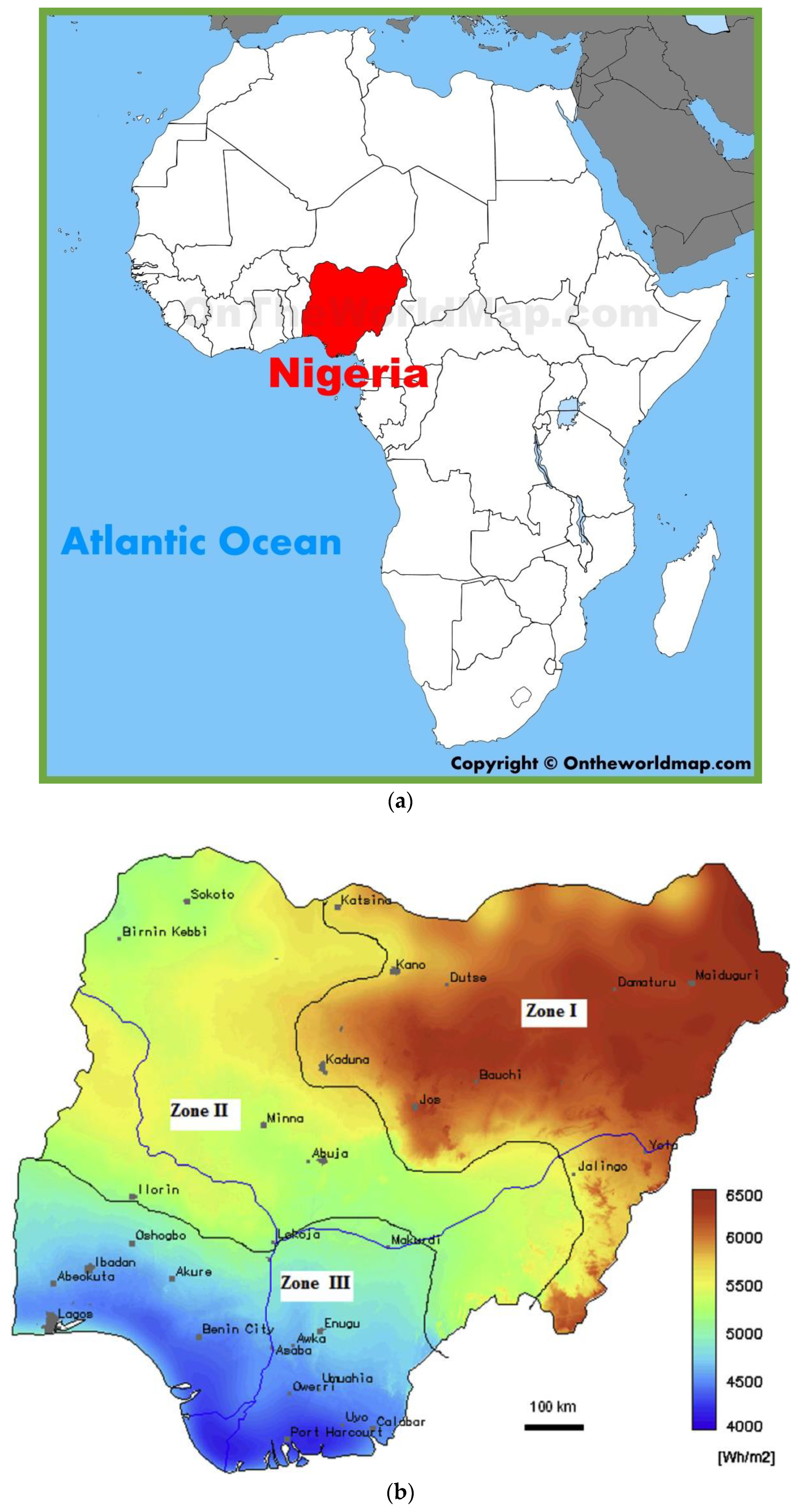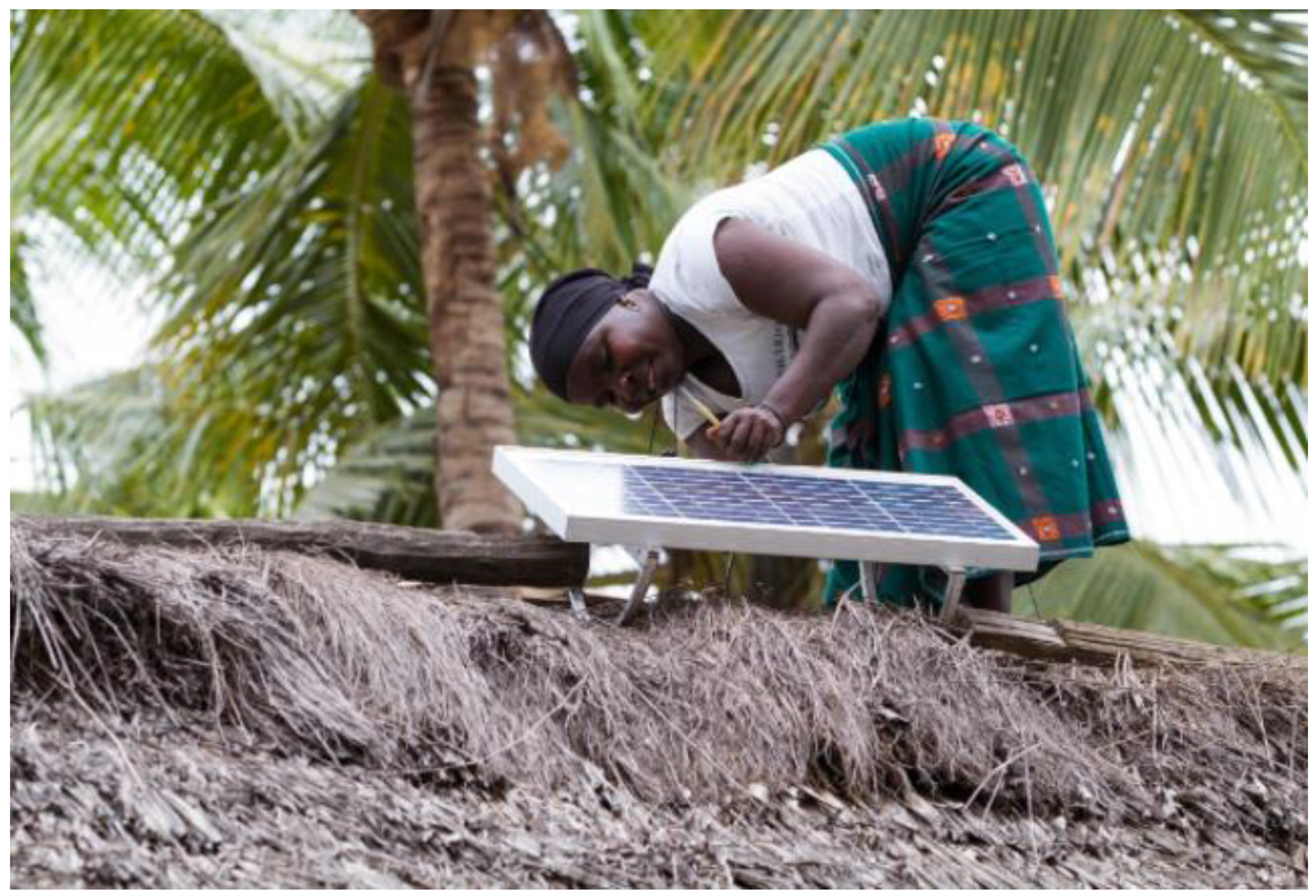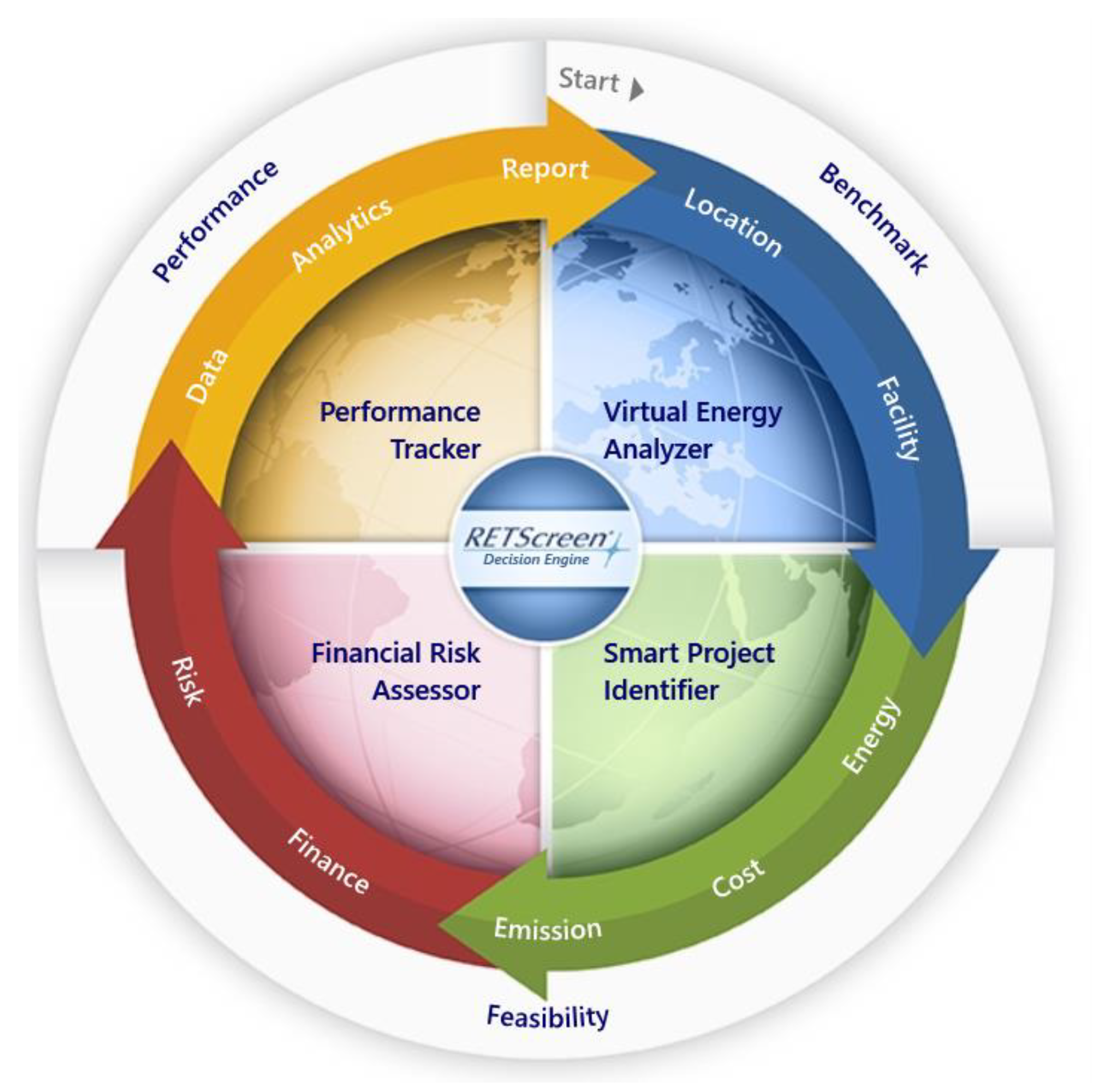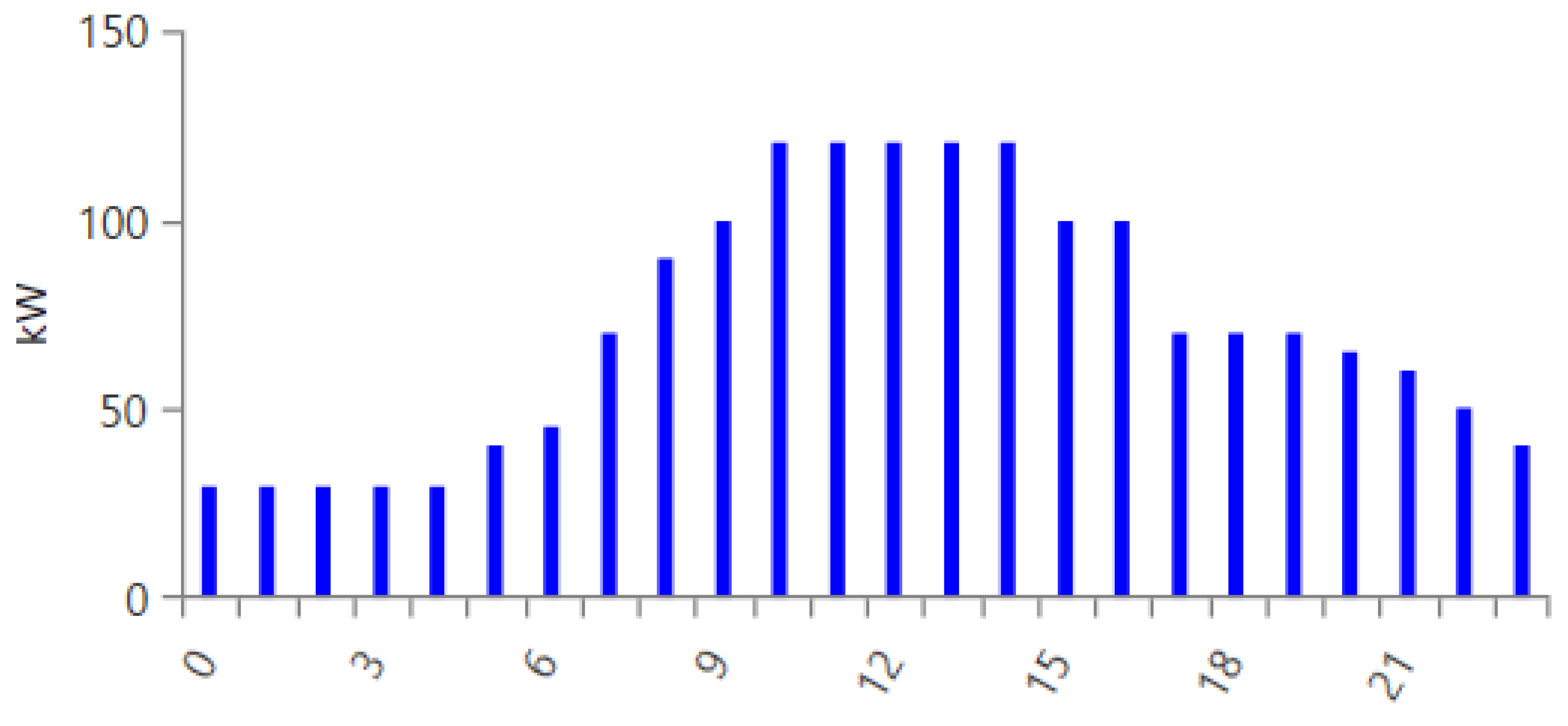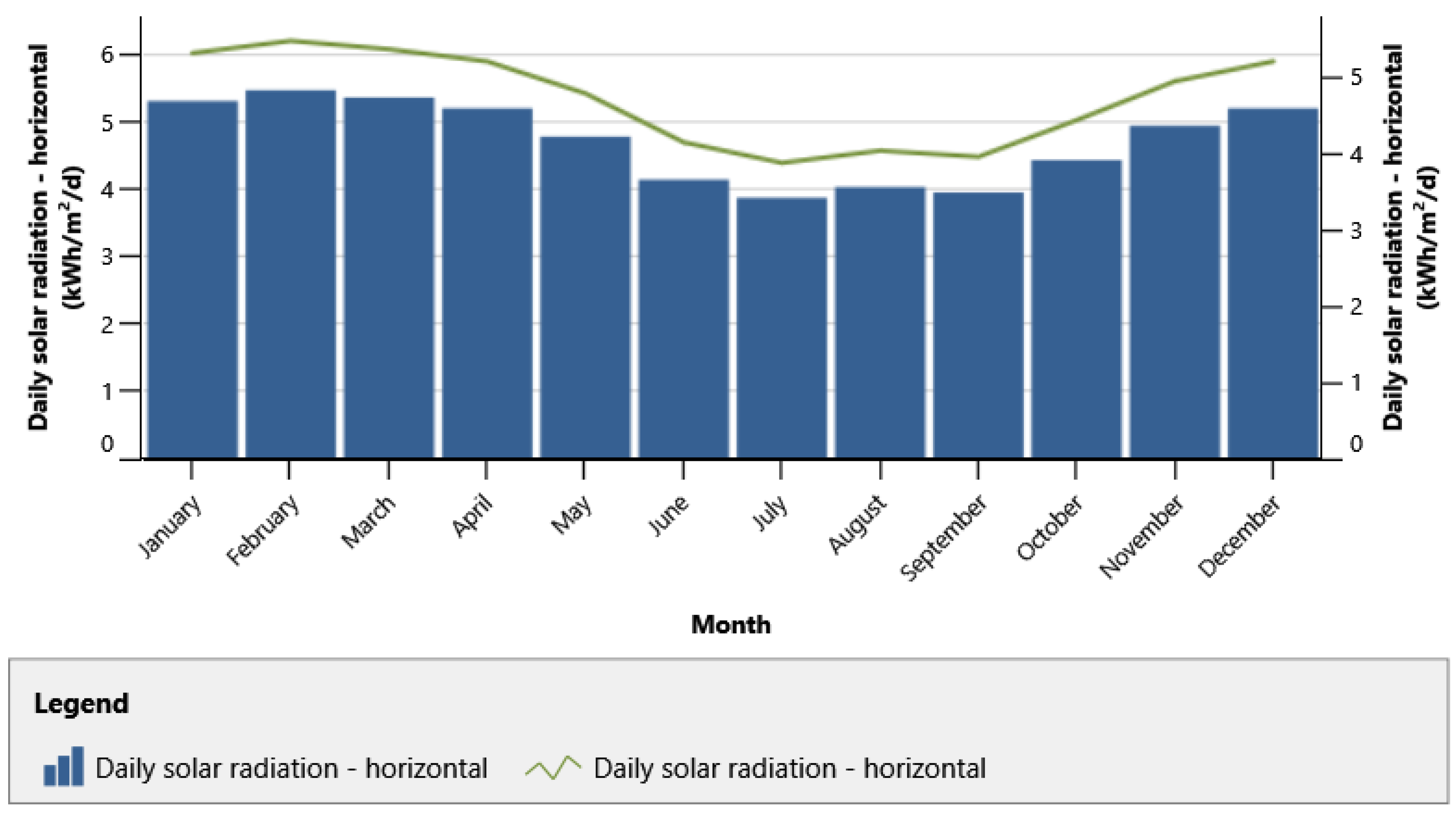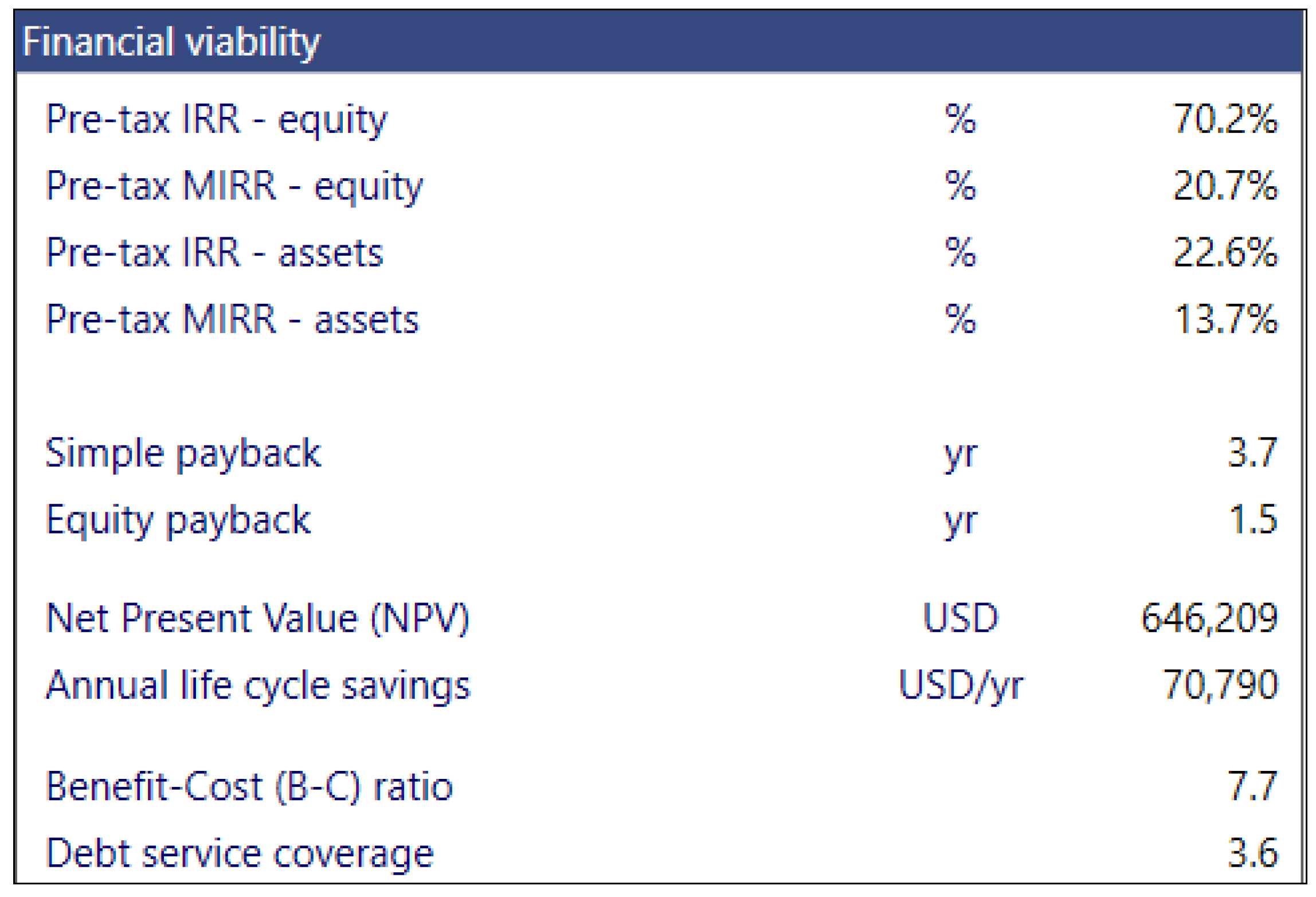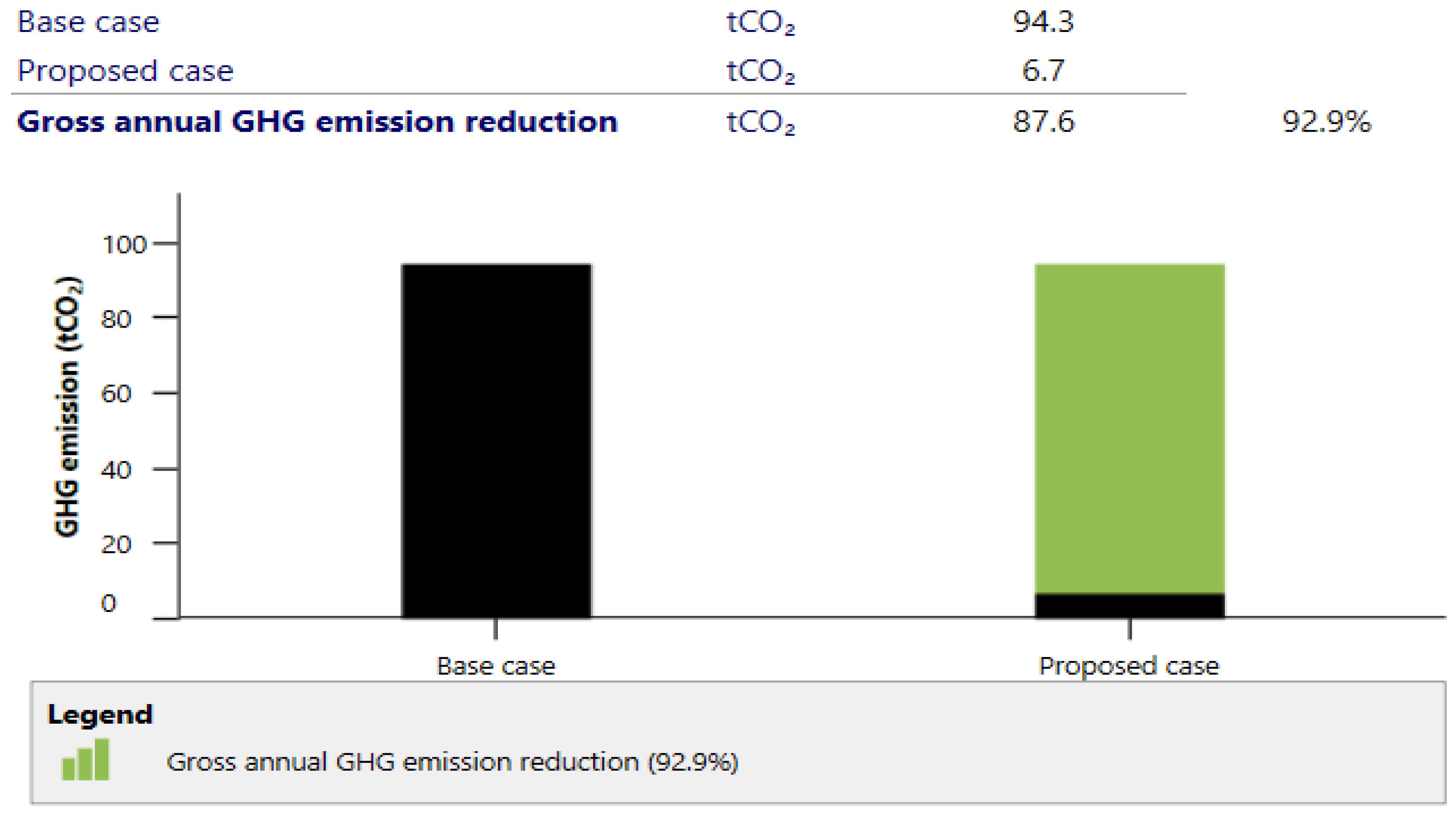1. Introduction
This introduction briefly situates the study within a broader context and highlights how energy poverty has severely impeded socio-economic development in Sub-Saharan Africa. This is evident in the limited access to electricity in many countries within this region. The situation in Nigeria is not an exception. Over 90 million Nigerians live in rural areas, and only approximately 26% of the rural population has access to electricity. In most cases, those with access pay the most exorbitant prices globally [
1]. This poor access to electricity has impeded social and economic development and stagnated the livelihoods of the overall population of rural dwellers, as national development is highly affected by a lack of access to electricity [
2]. Given technological advances and the increasing desire to improve quality of life, electricity has become fundamental for delivering essential day-to-day services such as water, healthcare, food, telecommunication, agriculture, education, and industrial processes. These amenities contribute immensely to the alleviation of poverty and the general quality of life in any community [
3].
The Nigerian energy sector is currently a work in progress, requiring significant efforts in developing both generation and transmission infrastructure to improve energy access. According to the Nigerian Electricity Regulatory Commission (NERC), the energy generation sub-sector in Nigeria consists of 23 grid-connected operational generation plants. These plants have a total installed capacity of 10,396 MW, with a total available capacity of 6056 MW. Specifically, the thermal-based generation installed capacity is 8457.6 MW, with an available capacity of 4996 MW. Additionally, there is a total installed hydropower capacity of 1938.4 MW, with an available capacity of 1060 MW [
4]. This translates to an energy mix predominately composed of thermal and hydro power generating sources, accounting for 75% and 25%, respectively. Currently, the contribution of other renewable energy sources in Nigeria, such as solar PV, is negligible, accounting for less than 1% of the total grid-connected energy generated and consumed.
In addition to the problem of poor access to energy, carbon-emitting non-renewable energy sources contribute significantly to Nigeria’s electricity generation. In 2020, gas-fired power plants constituted roughly 70% of grid electricity in Nigeria [
5]. This absence of an eco-friendly environment leads to adverse climatic effects and contributes to climate change. The global threat of climatic change calls for action and necessitates the deployment of more environmentally sustainable renewable energy sources such as hydro power, solar, and wind energies. The goal is to reduce GHG emissions while generating energy sustainably. In line with this objective, the Nigerian Rural Electrification Agency (REA) is engaged in massive rural electrification programs in Nigeria, which are primarily based on clean, renewable energy [
6].
To increase the contribution of renewable energy to the energy mix, the Nigerian government signed a power purchase agreement (PPA) in 2016 with 14 solar firms for solar power plants nationwide. As one of the government’s strategies, this agreement is expected to add at least 1.1 GW of electrical power to the grid upon completion of the projects [
7]. The International Trade Administration (ITA) also notes concerns about the capacity of the available transmission infrastructure in the country to accommodate the expected additional power. Considering these circumstances, it is believed that decentralized off-grid options such as small solar plants are more viable for rural communities due to the poor transmission infrastructure of the national grid, as identified by the ITA [
7]. This situation makes mini-grid solutions the breakthrough alternative for off-grid rural communities to increase energy access.
Overcoming the dual challenge of poor energy access and climate change requires Nigeria’s future energy supply to be technically affordable, economically feasible, socially acceptable, and environmentally sustainable while increasing energy access, especially in rural areas. Evidence from Owolabi et al. [
8], using RETScreen analysis, showed that a grid-connected solar PV system is a more viable and dependable source of electricity in Nigeria, given the above-average solar irradiance of 5.96 kWh/m
2/d in certain regions. The research showed that PV systems have a capacity factor of 21.7%, resulting in very high energy output exported to the grid, a reasonable payback period (13.6 years), and a reduction in GHG emission equivalent to 501.5 ha of forest-absorbing carbon. This research highlights the technical and economic feasibility of hybrid renewable energy systems (HRES) in Nigeria, particularly in areas with high solar irradiance such as northern Nigeria.
The International Energy Agency (IEA) estimates that approximately 42% of the additional electricity generation capacity required to achieve universal energy access can be most economically and sustainably achieved through mini-grids [
9,
10]. Considering the growing population and expanding economic activities, this study aims to propose an optimized hybrid renewable-energy-based mini-grid model that meets the load demand of selected rural communities in Nigeria. The proposed model underwent technical and economic feasibility analyses of an existing system using RETScreen Expert.
Nigeria is geographically located on the West African coast of the Atlantic Ocean, within the Gulf of Guinea, with a latitude of 9.0820° N and a longitude of 8.6753° E. It spans over 923,768 square kilometers of landmass (356,669 sq mi), and the country extends approximately 1127 km (700 mi) from east to west and 1046 km (650 mi) from north to south. Nigeria has been a sovereign nation since 1960 [
11], as shown in
Figure 1. Its vast geographical expanse makes it one of the largest countries by land mass in the West African sub-region and one of the largest economies in Africa. Nigeria has an estimated population of 206 million [
12], accounting for almost half of West Africa’s population. It is the most populous African country (
Table 1) and globally ranks as the seventh most populated country, following China, India, the USA, Indonesia, Pakistan, and Brazil. Nigeria is also one of the most youthful countries globally.
Niger, Chad, Cameroon, the Atlantic Ocean, and Benin border Nigeria to the north, north-east, east, south, and west, respectively. Beneath Nigeria’s vast landmass lies millions of tons of unexploited natural energy resources, including bitumen, coal, petroleum, and natural gas. Nigeria accounts for a considerable proportion of Africa’s oil exports, with estimated oil reserves of 37 billion barrels, equivalent to 30% of Africa’s total oil reserves, making it Africa’s largest oil exporter [
13]. Nigeria is also a major player in the production and exportation of natural gas, ranking first in Africa, followed by Algeria, ranking ninth and eleventh globally, respectively [
14].
Figure 1b shows the solar irradiance incidence in Nigeria. The figure divides the country into three zones according to the amount of solar irradiance each region receives. The mini-grid system under study is positioned in Zone III, which experiences the lowest solar irradiance.
Figure 1.
Map of Nigeria denoting solar radiation intensity. (
a) Location of Nigeria on the African map [
15], (
b) Incident Solar radiation in Nigeria [
16].
Figure 1.
Map of Nigeria denoting solar radiation intensity. (
a) Location of Nigeria on the African map [
15], (
b) Incident Solar radiation in Nigeria [
16].
The importance of energy in daily life cannot be overstated. This claim holds because all daily activities rely on energy availability, accessibility, cost, and sustainability. Given the poor energy access in Nigerian rural areas [
17], the rapid development of alternative energy sources is needed. Several renewable energy options, such as solar, wind, small hydro, and tidal, have been identified. However, many challenges, such as high payment default rates, regulatory issues, low electricity demand due to low productive activities in rural areas, and over-optimistic demand projections [
10], are faced by rural areas. These challenges have significantly impeded the development and deployment of mini-grid systems in rural areas globally.
Other challenges have been identified, including financial factors such as the high initial cost of installation and ongoing operational and maintenance (O&M) expenses. Technical factors, such as optimal sizing, identification of base and peak loads, and technical expertise, have also impeded the widespread adoption of mini-grid systems in Nigeria [
18]. These problems stem from the central grid’s inability to sufficiently supply sufficient energy to most rural areas, the failure of certain mini-grid projects, and the environmental impacts of the energy supplied under the high carbon-emitting business-as-usual energy scenario.
The failure of many mini-grid programs has been attributed to socioeconomic factors and regulatory lapses, making it essential to not only consider regulations and technology but also economic incentives for constructing mini-grids and evaluating the effectiveness of existing policies designed to enhance these incentives [
19]. Optimizing hybrid mini-grid systems to tackle the identified challenges is relevant to commercially operated schemes involving private operators and community-based schemes [
10].
In this research, we acknowledge the availability of reasonable solar irradiance in most parts of Nigeria, as identified by Dioha and Kumar in 2018 [
18] as most abundant in Kano state and the lowest in Rivers State in the Northern and Southern parts of Nigeria, respectively. With good market conditions, we ascertained the economic feasibility of an isolated photovoltaic mini-grid system stationed in Gbamu-Gbamu, Ogun State, Nigeria. RETScreen Expert was used to conduct the techno-economic analysis (Economic and Technical feasibility) and environmental feasibility.
This study examined how technically and economically feasible renewable-energy-based microgrid systems are in meeting the load demand of the Gbamu-Gbamu community in Ogun State, Nigeria. It involved running a technical and economic feasibility analysis and an environmental assessment. While the technical and economic analysis assessed the feasibility and applicability of the project, the environmental assessment helped to establish the extent to which the project can reduce carbon emission, using the business as usual (BAU) scenario as a base case.
The specific objectives were as follows:
Evaluate the techno-economic feasibility of the installed plant.
Establish the level of environmental sustainability of the existing system.
Provide policy recommendations on the adoption of isolated mini-grid systems based on the findings.
By achieving the above objectives, the research aims to answer the following questions:
Is the system economically and technically feasible?
How environmentally sustainable is the existing system in Gbamu-Gbamu, Ogun State, Nigeria?
What are the likely policy implications of adopting isolated mini-grid systems in Nigeria?
A review of existing literature shows that the topic, “Techno-economic optimization of Mini-grid systems in Nigeria: a case study of a PV–battery–diesel hybrid system”, introduces fresh ideas in the energy field for Nigeria. Scholars have studied sustainable energy technologies and assessments in Nigeria [
8,
20,
21]. These scholarly researches, among others, provide a foundation for further exploration of the aforementioned topic.
The topic extends beyond techno-economic optimization to encompass the assessment of environmental impacts. By optimizing PV mini-grids and conducting an environmental analysis, this study will examined the current state of Nigeria in the business-as-usual scenario and showed the potential feasibility of transitioning to cleaner and renewable energy integration through isolated hybrid mini-grid systems. The findings of this research will be instrumental in guiding the design of energy systems for remote rural communities where energy access is extremely limited and will serve as empirical literature for further studies in this area. Given the intensified emissions of GHG globally, this research is positioned to provide an environmentally friendly and sustainable energy solution while helping to solve the energy access problem in rural areas.
In line with the objectives of this research, which primarily focus on ascertaining the technical and economic feasibility of a renewable energy-based mini-grid system and its environmental sustainability in a rural community, the research objectives were focused on a rural community in Gbamu-Gbamu, Ogun State state, in Southwestern Nigeria.
The technical parameters that were optimized included sizing, load, system operation (see [
22]), and identifying the best tracking angle or slope. For economic feasibility, ref. [
8] estimated the payback period and the net present value of a Solar PV system in Nigeria. RETScreen Expert software was essential for estimating significant study parameters, including the carbon emissions that would be saved through the implementation of an optimized clean energy system. All estimations involved in this study were within the purview of RETScreen Expert.
1.1. Mini-Grid Systems
The critical role electricity plays in human lives cannot be overemphasized. With the increasing global population and expanding economic activities, the demand for electricity is becoming overwhelming. However, established public utilities have often concentrated more on urban areas, prioritizing the demands of the vocal and economically affluent class, while largely failing to address the needs of rural villages. As a result, in rural areas around the world where there is little to no access to the grid, individuals and communities now construct their electricity distribution systems, relying on isolated power sources such as solar, hydropower plants, or diesel/petrol generators.
The Energy Management Assistance Program (ESMAP) notes that eleven privately owned mini-grids were operational in Nigeria in 2017, serving approximately 9100 people with a cumulated capacity of approximately 236 kW [
23]. Mini-grids promise to be the most cost-effective means of providing electricity to neighbourhoods or entire communities [
24]. Over the past two decades, Mini-grid generation in Nigeria has gradually grown from fossil-based to renewable sources of energy. Beginning in the 1990s until the late 2000s, mini-grids in Nigeria were mostly powered by diesel. All 11 mini-grids in Nigeria are now based on renewable energy, and solar PV and battery technology are the dominant combinations. The 50 kW project by GVE in the Bisanti and the Ajima 20 kW Farms in Rije run on biogas and two others that use hybrid solar PV–diesel systems are notable [
25,
26].
A (hybrid) mini-grid system usually comprises three critical subsystems: (i) production, (ii) distribution, and (iii) demand, as shown in
Table 2 [
27]. The availability of energy resources, the desired services to be provided, and the characteristics of users collectively determine how a subsystem can vary in its architecture and components.
The mini-grid design directly affects the cost structure of the project. It defines the pricing of energy (in USD/kWh) produced and estimates overall service quality. The local conditions and the rural community’s needs must be analyzed in the early assessment of a successful design. This helps boost the level at which the community is involved and provides support for design considerations. Local involvement in the process, which considers the socio-economic and cultural environment, is essential to lower the risk of project failure. It also helps eliminate any negative perceptions of renewables among the region’s population, as they are aware of the project’s details [
28].
1.1.1. Why a Hybrid Mini-Grid?
Research shows that combining different renewable energy technologies with different energy sources provides a competitive advantage compared to using a single technology [
27]. Their research paper established that combining renewable energy sources such as solar and wind with a Genset made of diesel provided the least-cost solution. This is because the advantages of each technology complement each other, which is very accurate for intermittent energy sources such as the sun and wind. Since renewables do not run on fuel, fuel price or supply volatility does not affect their operation. However, renewable systems depend on the availability of specific natural resources at specific times and seasons, which are subject to natural phenomena. Therefore, they are non-dispatchable. On the other hand, diesel generators are dispatchable; they can deliver electricity within a schedule. Combining these two sources leads to the coverage of various shifting load profiles.
It has also been argued that combining various renewable sources such as solar, wind, and hydro makes sense in many scenarios [
27]. For instance, solar PV collectors can be likened to seasonal fluctuations following sunlight availability, while wind power complements it in months with low irradiance. Considering daily fluctuations, solar energy production peaks around midday when the sun is intense, whereas wind turbines can operate based on the availability of wind irrespective of the time of the day or night. Introducing storage batteries significantly stabilizes the system and give room for days of autonomy by storing the energy, especially for periods of insufficient production.
1.1.2. Off-Grid Electrification
Approximately 1.6 billion individuals reside in rural and remote areas without access to electricity [
9]. The absence of electricity significantly hampers the socio-economic progress of remote villages, resulting in a development gap compared to their urban counterparts. Expanding the national grid to these rural areas, which are often characterized by challenging terrains and low energy demands, can be economically inefficient and labor-intensive. Consequently, off-grid electrification has emerged as a viable solution for powering these underserved areas [
29].
Off-grid electricity refers to all the means that people have used and are still using to generate electricity other than connecting to the national grid. In recent years, the use of domestic generator sets and renewables (solar, hydro, and wind power) for local electricity generation has gained significant attention beyond the local energy sector. Outstation home electrification has been realized, and generating electricity has become increasingly popular, especially in commercial applications [
27]. Most rural areas that would have been otherwise difficult to electrify are now gaining electricity access due to the expansion of off-grid electrification technologies, including standalone renewable power systems. These systems sometimes incorporate advanced energy storage methods, and strategies for power control can be applied. Distribution and transmission can be further facilitated using a dedicated mini-grid or microgrid isolated from the primary electricity grid [
30].
Research in Nigeria highlights off-grid renewable energy as a feasible solution for ensuring consistent and reliable electricity access, particularly in rural areas. It also presents an opportunity for Nigeria to reduce greenhouse gas emissions resulting from electricity generation. However, the lack of sufficient capital for investments in the off-grid renewable energy sector has impeded the progress of off-grid renewable electricity projects [
31].
Several energy technology types, including renewables, are available in off-grid electricity systems (
Figure 2) [
27,
28,
29,
32].
- ➢
Small or micro-hydro: Small hydro is widely recognized as one of the most cost-effective technologies; however, its feasibility heavily relies on the availability of water resources and specific flow rate and volume conditions. This mature technology has been successfully deployed worldwide for over three decades.
- ➢
Solar photovoltaic (PV): Solar PV is suitable for most locations around the world. It is considered easier to install, maintain, and scale up compared to other options. The biggest challenge is the higher initial investment costs.
- ➢
Small wind power technology: Small wind power technology is another renewable energy-based option, often site-specific. This is because wind availability changes over time and varies dramatically in different places. Therefore, r a careful study of wind resources becomes imperative before a system is installed.
2. Materials and Methods
This section discusses the methodology of this study, which considers the parameters, design, and technical specifications of the energy systems under study. We also discuss the data collection method and the type of data collected. The data collected on technical parameters include electricity demand/consumption, power generation factor, PV module sizing, the energy required, inverter sizing, and battery capacity [
8]. The methodology is discussed in detail under the headings below.
2.1. Energy Modelling Software: RETScreen Expert
RETScreen is an energy modelling software developed through collaboration between the Canadian Government and Natural Resources Canada’s CANMET Energy Diversification Research Laboratory (CEDRL). It aims to create awareness, promote innovation, and provide decision-support and capacity-building in renewable energy [
8]. RETScreen is a collective effort of over 307 experts from the energy industry, government, and academia. RETScreen collaborates with various organizations, including the United Nations Environment Program (UNEP), the National Aeronautics and Space Administration (NASA), and the Renewable Energy and Energy Efficiency Partnership (REEEP), among others [
33]. Several versions of the software are available for public use, but users must have paid subscriptions to use the professional version of the software.
RETScreen has a broad range of applications in the energy field. Its primary applications include the analysis of the feasibility of energy projects, renewable energy (such as solar PV, wind energy, and hydro), and energy-efficient technologies [
34]. RETScreen enables energy feasibility and performance evaluation of new and retrofit projects as well as monitoring and evaluating existing projects. It is suitable for technical and economic assessments, environmental and sensitivity, and risk analyses. RETScreen software is used to assess the financial viability of renewable energy projects by ascertaining if the revenue from the project can sustainably cover the cost over time. Three primary analysis tools are available on the RETScreen home page, including tools for benchmark analysis, feasibility analysis, and performance analysis. This study used RETScreen Expert Version 8 to conduct the techno-economic analysis of an isolated mini-grid in Nigeria. The choice of RETScreen was informed based on its aforementioned features, including its user-friendliness, which sets it apart from other similar energy modeling software in its suitability for achieving the research objectives.
Figure 3 shows the workflow of RETScreen Expert and its components.
2.2. Research Method
This research involved a desk review method to conduct a literature review. Keywords such as “Hybrid energy systems”, “renewable energy system optimization”, “a techno-economic assessment of renewable energy systems”, etc., were used to search online sources such as google scholar, ScienceDirect, and other renowned online journals. More than 250 related research publications, conference proceedings, reports, articles, and dissertations were identified on the topic. The accessed documents were sorted based on their relevance. Ultimately, the relevance of each publication to the research topic was evaluated by reviewing its abstract and findings. The most relevant documents were selected, reviewed in the literature of the paper, and appropriately cited when necessary.
Additionally, data on the mini-grid plant under study were collected by the researchers. The developers and operators of the hybrid mini-grid provided access to the data for all the technical and economic parameters. Since the mini-grid is designed to serve a cluster of households, the operators provided the loading data. The remaining data used were secondary data accessed primarily from online data banks. The data were analyzed using RETScreen to enable the researchers to achieve the research objectives.
2.3. Data Collection
As described in the previous paragraph, the study used primary and secondary data to enable the researchers to achieve the research objectives. The primary data were collected first-hand, directly from the source involved. This research conducted a survey involving direct contact with the operators of a mini-grid system in Ogun state, Nigeria. All the data collected through this process were considered to be in the primary data category. The data in this category included the technical parameters and the economic and energy load, ollected directly from Gbamu-Gbamu mini-grid operators through interviews and a review of their records.
The secondary data used for the study included the climatic data for the mini-grid location, which was made available by the National Aeronautics and Space Administration (NASA) and incorporated into the RETScreen and HOMER software programs. The number of households and commercial users, as well as their energy demand, were obtained from the mini-grid operators. The mini-grid uses a prepaid metering system. Hence, the bills were used to estimate the average household energy consumption. This information was collected and documented to facilitate the effective management of the plant.
2.4. Study Area
This study was conducted in the rural community of Gbamu-Gbamu in Ogun state, Nigeria, where a solar PV of 85 kWp was installed. The Gbamu-Gbamu community is relatively large and comprises approximately 550 households and 5000 inhabitants. It is located in the Ijebu East Local Government Area. It is an agricultural community that produces, processes and trades various crops (cocoa, palm produce, plantain, kola nut, etc.) [
35].
Table 3 shows the study area details based on NASA data.
The community is estimated to be 13 km away from the Expressway. Economic activities requiring electricity include agriculture, milling, hospitality, public, religion, and education. The alternative sources of electricity for the community are private diesel and petrol-powered generators. Given the high cost of petrol and diesel, these options are expensive to run. They are also not environmentally friendly due to the carbon emissions associated with the fuels. The hybrid mini-grid is designed to have a capacity of 85 kWp of PV, 67 kVA of Diesel Generator, and 5.6 km of low voltage grid (covering 80% of the village). The mini-grid design has been optimized to meet the demand of the village.
2.5. Load Estimation for the Power Site
Load estimation refers to the energy demand of the end-users of the electricity generated by the power plant. Properly designing a solar system requires calculating the total power and energy consumption of all loads supplied by the PV system [
36]. They can be classified into domestic/household, commercial, and industrial users. The sum is the total energy demand for the project, which necessitates that the power plant is able to provide enough energy for its intended consumers.
2.5.1. Domestic/Households Load Estimation
The household load was estimated by observing the average electrical appliance usage by a typical (average) rural household in the region. Dominguez et al. (2018) estimated the average rural household energy consumption to be 1636 Wh/HH/day [
37]. However, this figure was estimated to be lower in Gbamu-Gbamu. Out of the 550 households in the community, 493 are connected to the mini-grid system, which accounts for approximately 88% of the total households.
Table 4 provides a list of the electrical appliances typically found in an average rural household. The load profile informs the plant operators of the peak loading hours for efficient management of the mini-grid system. The chart shows that the households’ peak loading occurs in the evening hours, which is typical for a rural setting when everyone returns home and utilizes electrical devices at night.
The multi-tier framework categorizes the listed appliances between tier 1 and tier 3 based on energy access. Most rural dwellers use electricity primarily for lighting, radio, and charging mobile phones, usually for a limited duration. Based on this, the estimated household consumption is calculated as follows:
265 × 493 = 130,645 watts (estimated household peak energy consumption per day = 130.64 kW).
To validate this estimate, the power plant recorded a peak monthly electricity consumption of 4591 kWh by households, which amounts to 153 kWh/d.
2.5.2. Commercial Load Estimation
The rural setting under study exhibited a significant level of commercial activity. Among the commercial customers were welders, motels, restaurants, grocery shops, and computer services. Using the prepaid metering system, the cumulative energy consumed by the 147 commercial customers was 3855 kWh per month. This results in a monthly average of 128 kWh/d. The plant also recorded a peak energy consumption of 338.2 kWh/d.
Figure 4 shows the estimated average daily load profile of the commercial customers connected to the mini-grid under study. The commercial customers exhibited a higher energy consumption during the day, which was expected since their activities primarily take place during daylight hours.
2.5.3. Summary of Load Estimation per Category
The load estimation for both household and commercial users is summarized in
Table 5.
2.6. RETScreen Enviro-Economic Analysis Parameters
A RETScreen expert was primarily employed to access the environmental and economic analysis of the power plant. Additionally, HOMER helped to determine the optimized size of the mini-grid system. Economic parameters such as discount rate and inflation rate were collected from the relevant authorities, such as the Central Bank of Nigeria and the National Bureau of Statistics. These data were further cross-referenced with the data from the Financial Market Infrastructure Group (FMDQ) to ensure accuracy. The RETScreen software is also programmed with the carbon emission rate of all countries worldwide. It can estimate the carbon emissions avoided by adopting a clean energy system [
38]. The parameters used for the economic analysis are summarized in
Table 6.
2.7. Solar Potential
The techno-economic analysis of the solar PV system was conducted using solar irradiance as the input variable to determine the electricity output of the power plant. There are different methods of obtaining data for this variable, as solar irradiance is specific to the plant location [
39].
Ground data: Data collected using meteorological instruments on the site.
The RETScreen and HOMER software provide access to satellite meteorological data, which NASA collects and stores.
In this study, the NASA data were used directly from their database, eliminating the need to collect ground data for the analysis. The NASA database locates the nearest climate data location to the selected site. In this case, the selected climatic data location was at Ijebu Igbo, a council 26 km away from the solar PV site in Gbamu-Gbamu, Ijebu East local council, Ogun State, Nigeria. The results for daily average solar irradiance in the selected location are presented in
Section 4.
2.8. Hybrid Energy System
All input data for the hybrid system were collected directly from the existing mini-grid system, as shown in the subsections.
2.8.1. Input Data for Solar System
The hybrid mini-grid system in Gbamu-Gbamu was designed to have a solar PV capacity of 85 kWp, indicating a peak rating of 85 kW/h. It utilizes 250-watt Monocrystalline solar panels manufactured by Jinko. The peak energy requirement of the plant is 338.12 kWh/d.
To achieve 85 kW (85,000 watts), a total of 340 panels are used in the solar array (340 × 250 = 85,000 watt).
2.8.2. Input Data for the Battery System
The details of the input data for the battery system are summarized in
Table 7.
Therefore, battery capacity = = = 64,052.2 Ah.
2.8.3. Parameters of the Diesel Generator
The hybrid system includes a 60-kW diesel Genset with an 85 kVA capacity, which consumes an average of 50 L of diesel and runs for approximately 3–4 h per day. The generator was manufactured by Marapco. Its daily fuelling constitutes a significant part of the operations and maintenance cost of the plant. The data showed that the average cost of petrol was 315 Naira (0.77 USD) per liter (
Table 8).
The daily fuel consumption was thus calculated as: 315 × 50 = 15,750 Naira (38.414 and 1152.4 USD daily and monthly, respectively). These variables were pivotal in assessing the economic viability of the system and its environmental sustainability, given that diesel is a significant emitter of CO2.
2.8.4. Input Data for Converter
The total peak watt requirement of the power plant determines the inverter size used in the PV system. Ideally, the inverter should be large enough to accommodate the requirements of the system at all times, meaning the total peak watt must be adequately covered. Therefore, it is recommended to have an inverter that is approximately 30% larger than the total system load [
36]. However, upon investigation, the inverter at the plant was found to have an 80 kW capacity. According to Chandel et al. (2014) [
36], the plant’s peak energy rating was 85 kW daily. Therefore, the inverter should be 1.3 times larger to allow for an error factor:
2.9. Limitations of the Study
Due to the methodology and scope of the study, the research has some limitations. These limitations include the following:
The result of the study is specific to the study location.
The estimation inputs are specific to the mini-grid system under study.
Some inputs used were subject to estimations and averages.
Rapidly changing inflation, discount, and exchange rates may result in different future results.
The analysis did not consider the effects of temperature and climate change on the PV over the lifetime of the project.
